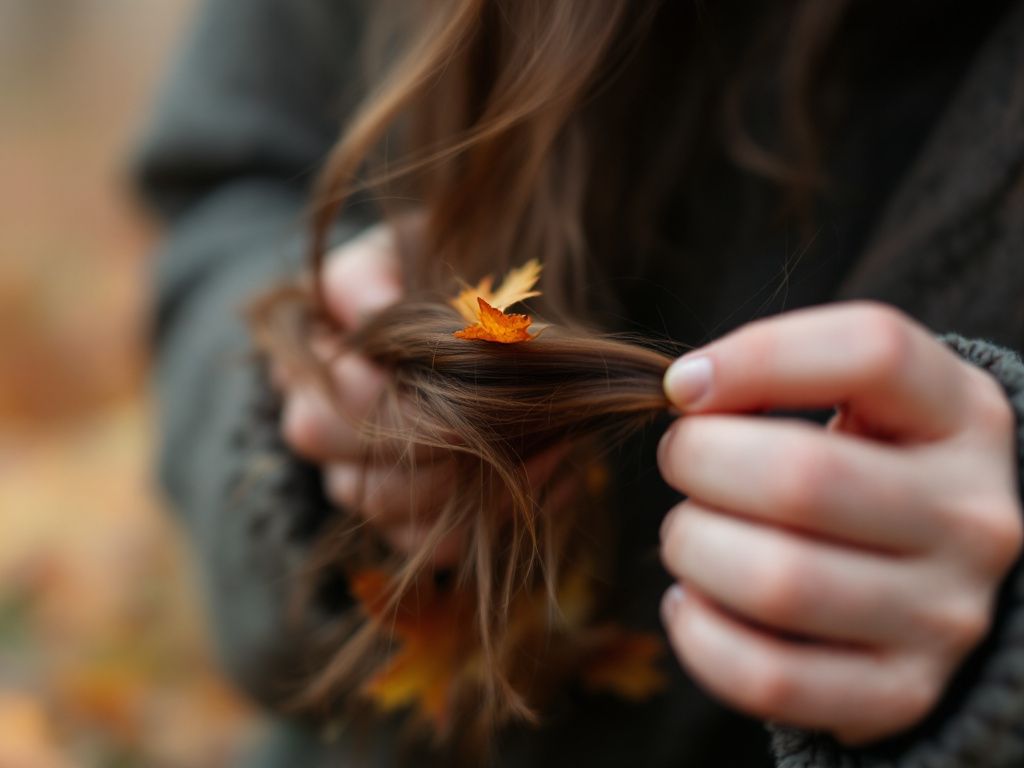
Picture this: You wake up one autumn morning, grab a cozy sweater, and head to the bathroom. As you’re getting ready, you notice a small clump of hair around the drain, maybe more than you’re used to. You’re not alone—seasonal hair shedding is a real thing, and a lot of us experience it. So, why does it happen, and what can we do about it?
Understanding Seasonal Hair Shedding
Before we dive into solutions, let’s talk a bit about what’s happening with your hair. Hair shedding is a normal part of the hair life cycle—our hair naturally goes through phases of growth, rest, and shedding. But during certain times of the year, especially in the fall and spring, these cycles can get a little overzealous, leading to more noticeable shedding.
Why Hair Sheds Seasonally
Now you might be wondering, why specifically in these seasons? It seems a bit unfair, right?
Here’s the thing—just like animals shed their winter coats, humans can experience something similar. In the summer, our hair often thickens naturally as a way to protect our scalps from the sun. Then, as the seasons change into fall, the added layers can be unnecessary, provoking a shedding process. It’s all about your body adjusting itself. Also, factors like changing daylight hours and shifts in hormone levels contribute to this seasonal change.
Spring can trigger a similar response as our bodies prepare for warmer, possibly sun-intensive months. The shedding isn’t excessive, just, well, noticeable. And while all this is completely natural, it doesn’t make clumps of hair in the shower any less unsettling.
Is It Normal?

So, is this normal? Absolutely! Most people lose about 50-100 strands of hair per day, and during these shedding seasons, it might bump up a bit. Not everyone will notice it—which is probably more about not keeping tabs than it not occurring at all.
That said, if you find yourself losing lots more than usual or noticing bald patches, that’s when you might want to check in with a professional. But generally, seasonal shedding is, with all its mild panic-inducing moments, quite ordinary.
Managing Seasonal Hair Shedding
All this talk of shedding isn’t meant to encourage helplessness—quite the opposite. Knowing is half the battle. Let’s get into some practical steps you can take to manage and support your hair.
1. Gentle Care Routine
First up, rethink your routine. Brush your hair gently, preferably with a wide-toothed comb, to minimize breakage and loss caused by tugging. When washing, treat your hair like a cashmere sweater—gentle and with care. Massaging your scalp while shampooing encourages healthy blood flow without being too harsh on your strands.
2. Be Picky About Products
There’s no shortage of hair products claiming to work magic, but during shedding seasons, opt for those that are sulfate-free and paraben-free. Look for shampoos fortified with vitamins or mild herbal compositions aimed at strengthening hair naturally. Trust me on this one—a great ingredient list makes all the difference.
3. Nutrition and Supplements
What you put into your body shows on the outside, too. A diet full of leafy greens, proteins, omega-3 fatty acids, and vitamins such as Biotin and Vitamin D can promote healthy hair growth. If you’re scratching your head, unsure if your diet covers it all, supplements might be your backup team. Just be sure to run them by a healthcare professional before incorporating them.

4. Limit Heat Styling
We all love those sleek styles and beachy waves, but constant high heat can weaken and break hair. Try to air dry your hair when possible and use heat tools sparingly. If you must use them, a good-quality heat protectant is a lifesaver.
5. Hydrate, Hydrate, Hydrate
Thank your hair (and skin, and body) by keeping yourself adequately hydrated. Dehydration can lead to dry, brittle hair. Water is your easiest ally—it’s understated, and yet, it’s a crucial component of any hair care regimen.
6. Regular Trims
You know how getting your ends trimmed can make your hair feel suddenly healthy and bouncy? Regular trims prevent split ends, which could theoretically climb up the hair shaft, leading to more shedding.
7. Massage and Oils
Naturally curing oils like olive oil, coconut oil, or argan oil can fortify your hair’s resilience against environmental stressors. Scalp massages paired with these oils can enhance blood circulation and improve the supply of nutrients to the hair follicles.
8. Knowing When to Seek Help

Finally, the occasional seasonal shedding with an extra clump or two of hair? We can handle that. But if you’re noticing excessive hair loss, thinning, or a lack of regrowth, consult a dermatologist or trichologist. Early intervention can head off potentially bigger concerns down the road.
Should You Try Home Remedies?
**Being a good sport and giving natural remedies a shot is never a bad idea.** From egg yolk masks to mashed avocados—your kitchen probably has more solutions than you think. While their effectiveness varies from person to person, they’re generally harmless and easy-to-try experiments.
Streamlining All Your Efforts
At the end of the day, dealing with seasonal hair shedding can’t boil down to one secret solution. It’s a confluence of your lifestyle, care regime, and health habits. Embrace your hair’s natural cycles and work with them, rather than against them. Celebrate the times when your hair feels full of life and take it in stride when it needs to let go a little.
Rearrange furniture, shift around jobs, or plan your workouts differently—life isn’t static, neither is your hair journey. Who knew those loose strands could teach us so much about maintaining balance and flexibility?
Recap of Key Points
- Understand the Phases: Recognize that increased shedding in fall and spring is a biologically normal response to environmental changes.
- Careful with Styling: More care with styling and less meddling—less stress on your hair.
- Support with Nutrition: Eat your greens and consider your supplements.
- Stay Hydrated: Vital for deterring brittleness and breakage.
- 5. **Professional Check: Always wise if shedding persists or worsens.
By acknowledging your hair’s natural seasonal tendencies and giving it the tailored care it needs, you nurture not just your hair, but your confidence too. So next time you notice hair around that drain, remember—you got this!
Frequently Asked Questions
How often should I wash my face mask to prevent maskne?
To prevent maskne, it is crucial to wash your face mask regularly. For fabric masks, wash them after every use, similar to how you would wash your underwear[2][3][4]. Disposable masks should be tossed after each use to prevent the buildup of bacteria and other contaminants[3][5>.
What type of skincare products are best for preventing maskne?
For preventing maskne, use skincare products that are oil-free or noncomedogenic. These products, such as gentle cleansers, moisturizers, and sunscreens, help prevent clogged pores and reduce the risk of acne. Look for products containing salicylic acid or benzoyl peroxide for their acne-fighting properties[1][3][4>.
How can I reduce friction and irritation caused by wearing a face mask?
To reduce friction and irritation, choose a mask that fits well and is made from breathable fabrics like cotton or bamboo. Loosen the mask straps, use pads under the straps, or consider a headband-style mask to minimize friction. Taking brief breaks to remove the mask and allow your skin to breathe can also help[2][3][5>.
What are some additional tips to prevent maskne while wearing a face mask?
In addition to regular mask washing and using the right skincare products, avoid touching your face, skip makeup or use noncomedogenic makeup, and moisturize your skin to keep it hydrated. Also, limit the use of active ingredients like retinol or benzoyl peroxide during the day when wearing a mask, and consider using a topical antimicrobial cream to prevent bacterial buildup[1][3][4>.
References


Leave a Reply